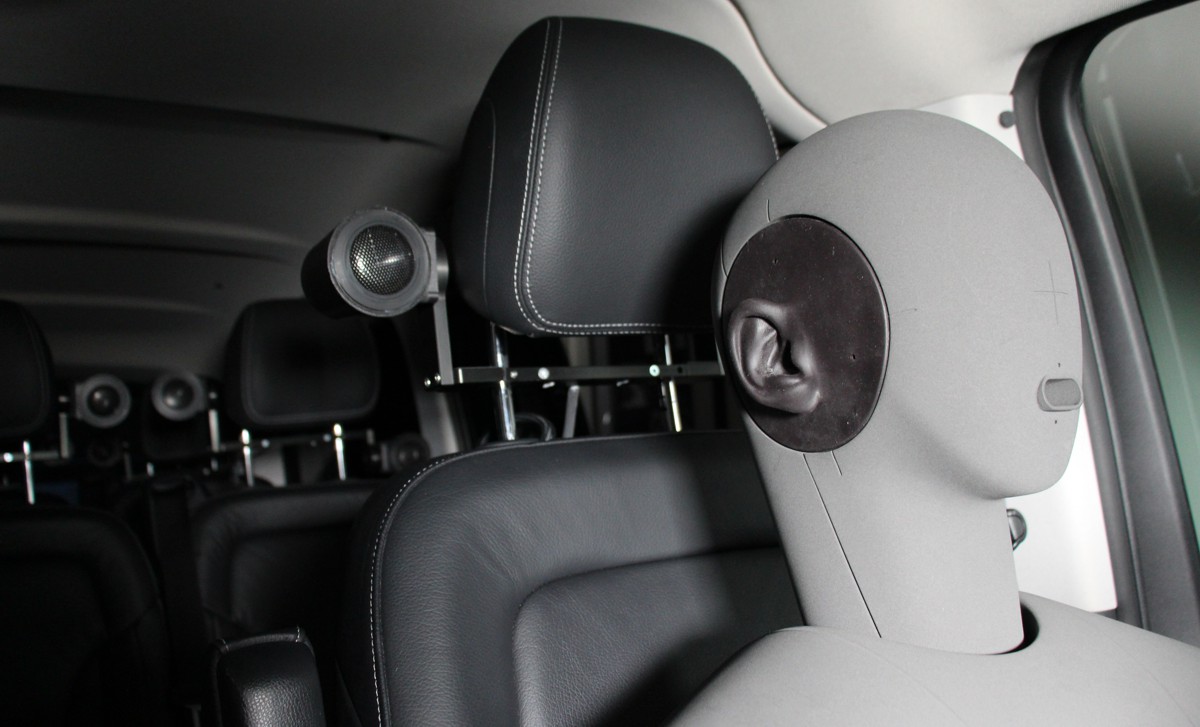The ANIR Corpus - Download
 |
||
| Contents: | ||
Here you can download all impulse responses as fir files and all background noises as wav files. Depending on what you need, you can get all files in one zip folder or just the impulse responses and background noises of one car. The download is free, but we would appreciate if you notfied us that you are using the files and for which purpose. For this please contact Gerhard Schmidt. If you publish work based on this database, please also cite one of our corresponding publications.
| Files | Size | Download | ||
|---|---|---|---|---|
| All (includes everything) |
6800 MByte | zip file | ||
| V class Daimler (includes all V class noises and impulse responses) |
6800 MByte | zip file | ||
| Noise files | 6800 MByte | zip file | ||
| Impulse responses | 15 MByte | zip file | ||
File Format
Please take note of below information on our file formats.
Background Noise
The background noise is provided as single-channel wav files at 48 kHz in 32 bit IEEE float format. The noise conditions and microphone numbers are coded into the file names in accordance with the template con_*_mic_*.wav. Consequently, a recording of condition 02_00 at microphone 5 would be saved as con_02_00_mic_05.wav. For correspondence tables of condition and microphone numbers please refer to the pages "State of the Corpus" and "Microphones", respectively.
Impulse Responses
All impulse responses of this database are estimated at a sample rate of 48 kHz. The impulse responses are stored in the the so-called .fir format, meaning that the first 32 bits (interpreted as integer) in such a file contain the length of the impulse responses in samples. The following bits are the samples (coefficients) of the impulse responses in 32 bit IEEE float format. The loudspeaker and microphone numbers are coded into the file names in accordance with the template lsp_*_mic_*.fir. Consequently, the impulse response between loudspeaker 3 and microphone 6 would be saved as lsp_03_mic_06.fir. For correspondence tables of loudspeaker and microphone numbers please refer to the pages "Loudspeakers" and "Microphones", respectively. If you want to read these .fir files, you may use below example code for either Matlab or Python.
Matlab (click to enlarge and see the code)
%**************************************************************************
% Function for reading .fir files (impulse responses)
%
% len: length of the impulse response
% h: coefficient vector
%
% Example call:
%
% [len,h] = read_rir('lsp_02_mic_03.fir');
%**************************************************************************
function [len,h] = read_rir(path)
f = fopen(path);
len = fread(f,1,'int');
h = fread(f,'float');
end
Python (click to enlarge and see the code)
#**************************************************************************
# Function for reading .fir files (impulse responses)
#
# len: length of the impulse response
# h: coefficient vector
#
# Example call:
#
# len , h = read_rir("lsp_02_mic_03.fir")
#**************************************************************************
def read_rir(path):
with open(path, "rb") as f:
len = np.fromfile(f,dtype= int,count= 1)
h = np.fromfile(f, '<f4')
return len,h
 On behalf of the members of the Chair of Digital Signal Processing and System Theory, we would like to take this opportunity to wish you all a very Merry Christmas and a peaceful, restful winter break. We hope that this festive season brings you joy, relaxation, and cherished moments with your loved ones.
On behalf of the members of the Chair of Digital Signal Processing and System Theory, we would like to take this opportunity to wish you all a very Merry Christmas and a peaceful, restful winter break. We hope that this festive season brings you joy, relaxation, and cherished moments with your loved ones.